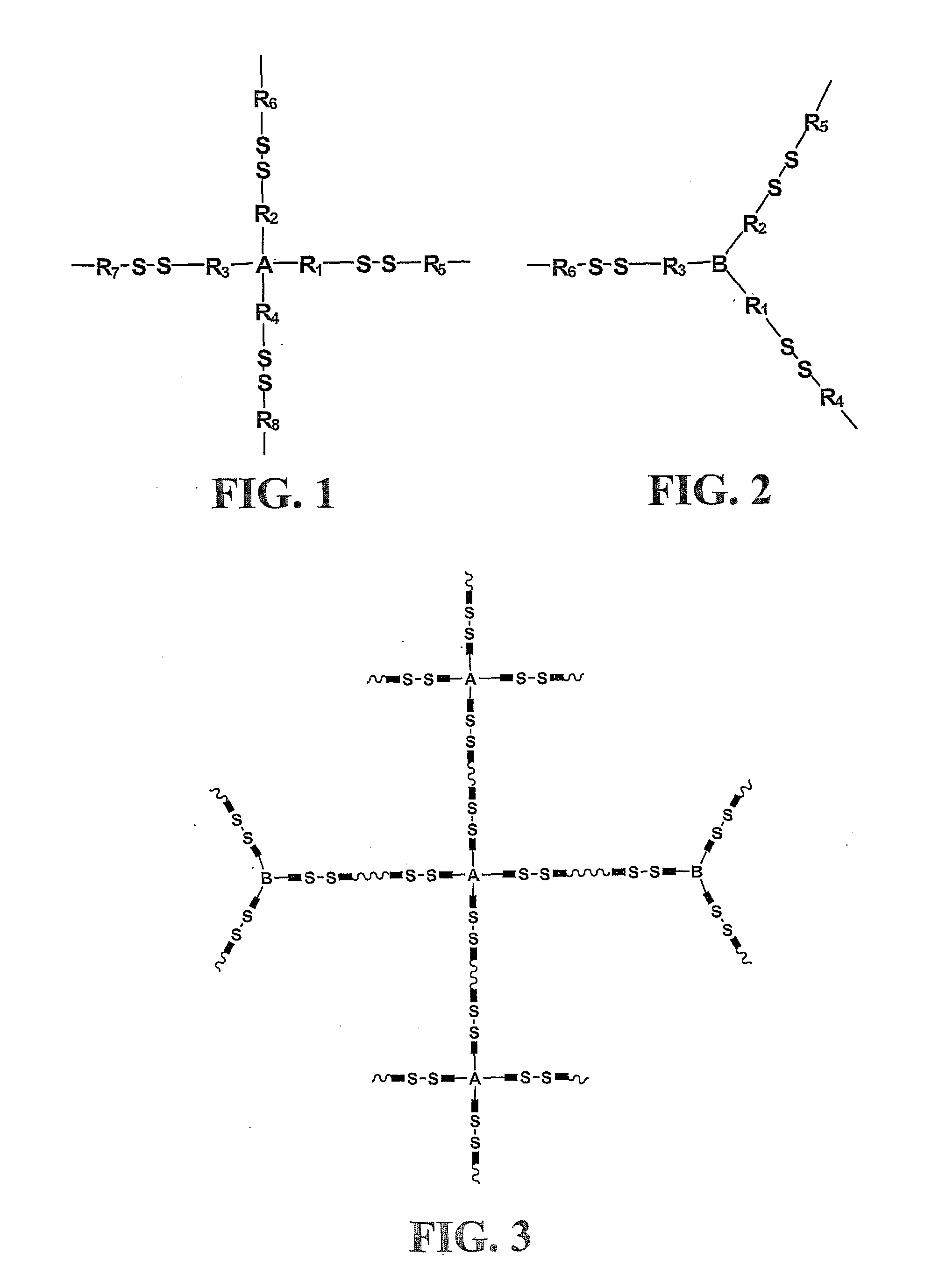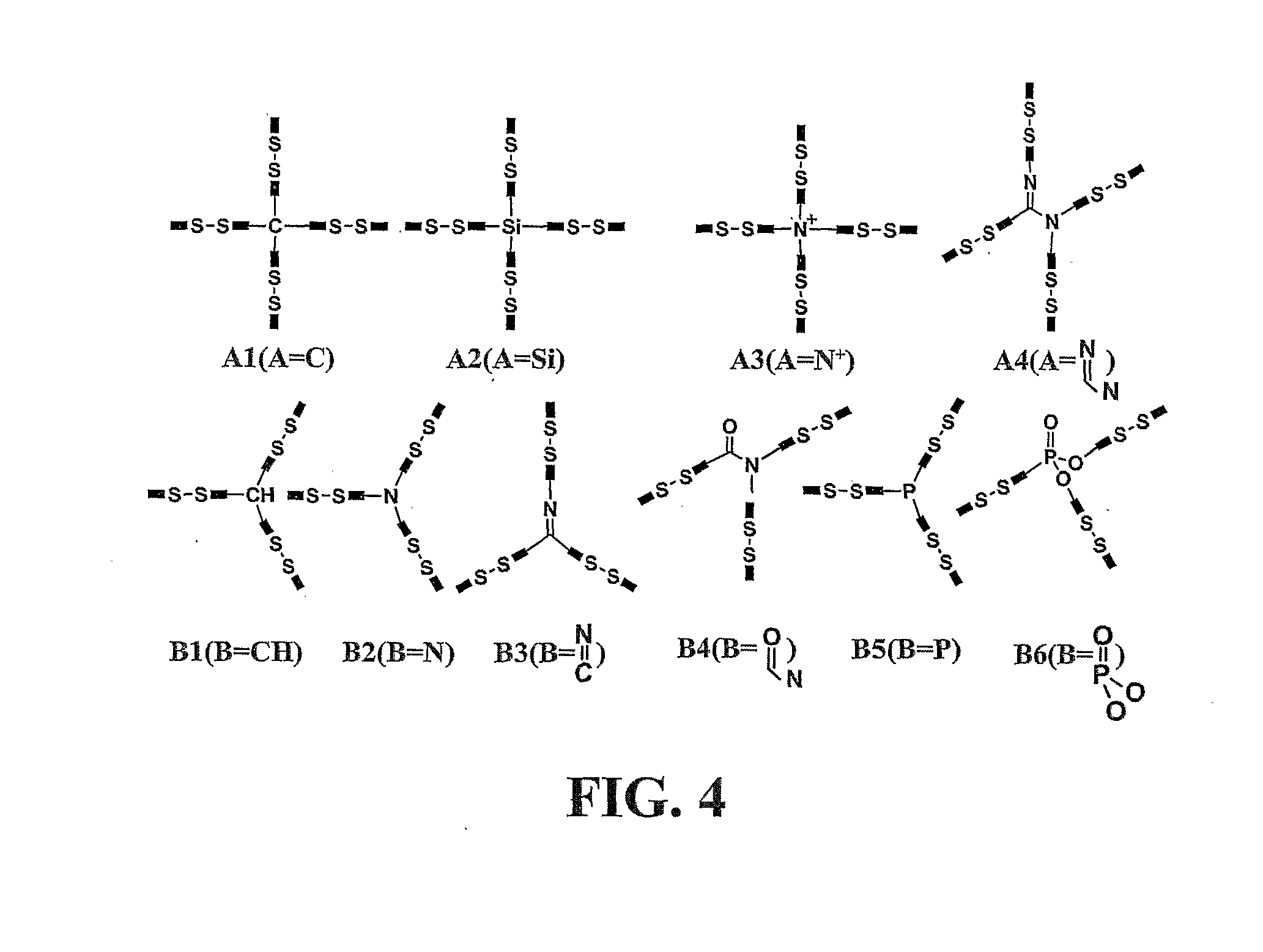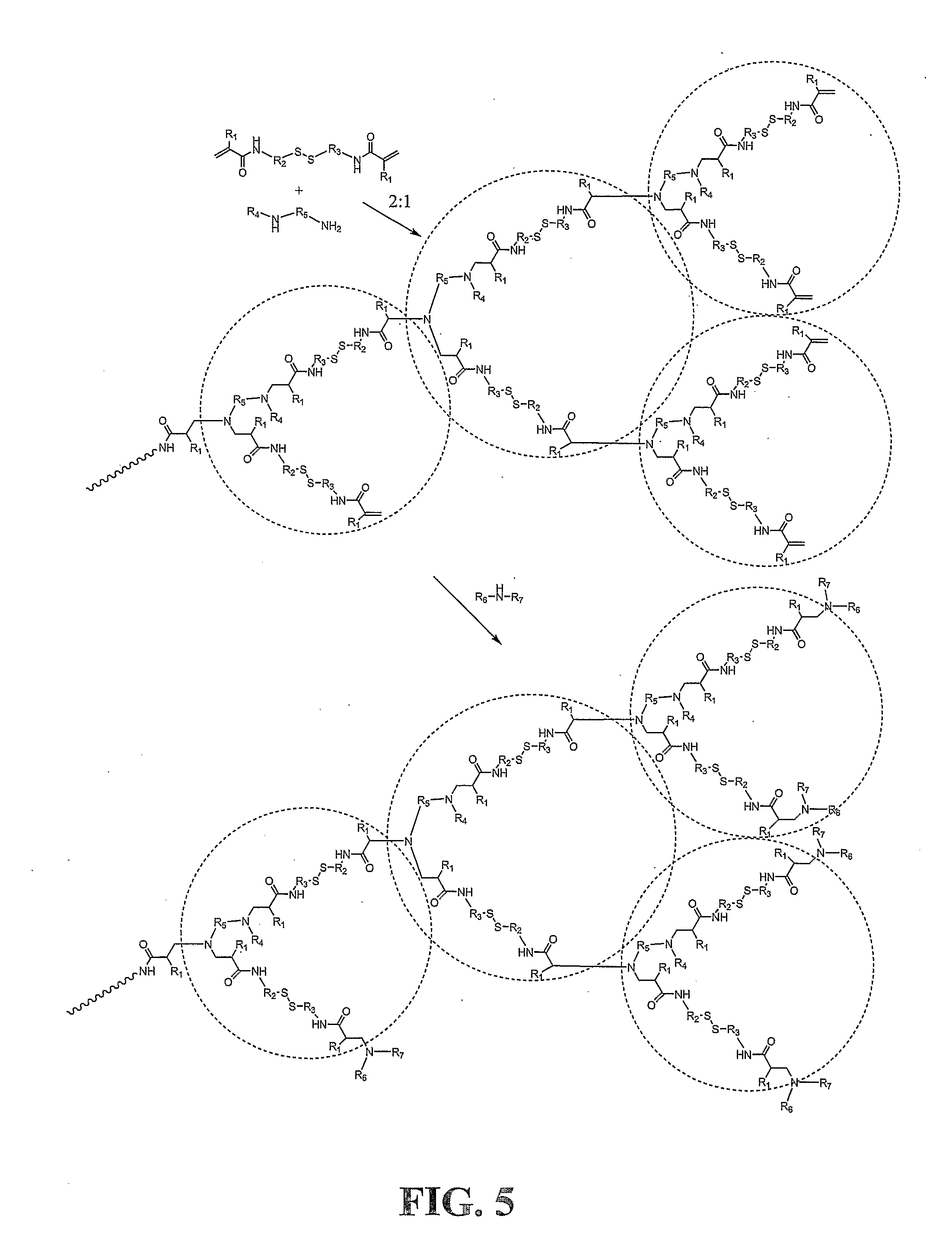Crosslinking branched molecule through thiol-disulfide exchange to form hydrogel
- Summary
- Abstract
- Description
- Claims
- Application Information
AI Technical Summary
Benefits of technology
Problems solved by technology
Method used
Image
Examples
example 1
Synthesis and Characterization of Hyperbranched poly(amido amine) poly(BAC2-AEPZ1)-PEG
[0104]AEPZ (1.5 mmol) was dissolved in 10 mL of methanol at room temperature. BAC (3.0 mmol) was added dropwise to the solution while stirring, followed by rinsing with 2 mL of methanol. The mixture was stirred at 50° C. for about 6 days. 2.3 mmol of α-amino-ω-methoxy-PEG (Mn=750) was added and kept stirring at 60° C. for one week to seal terminal vinyl groups. The product was precipitated from the reaction using 200 mL of diethyl ether under vigorously stirring. The polymer was collected and purified by reprecipitation from a methanol solution into 100 mL of acetone containing 5 mL of 37% concentration HCl followed by being dried under vacuum at 50° C. for 24 hours.
[0105]A water-soluble poly(amido amine) was obtained having an absolute molecular weight of 27000 g / mol as determined by DLS.
[0106]The hyperbranched poly(amido amine) samples as prepared were responsive and sensitive to changes in pH in...
example 2
Cytotoxicity Assay of poly(amido amine) poly(BAC2-AEPZ1)-PEG
[0107]BHK21, HEK293 and L929 cells were cultured in DMEM supplemented with 10% FCS at 37° C., 10% CO2, and 95% relative humidity. For the cell viability assay, polymer solutions were prepared in serum supplemented tissue culture medium. pH and osmolarity of the preparations were routinely measured and adjusted to pH 7.4 and 280-320 mosm / kg. The cells (10,000 cells / well) were seeded into 96-well microtiter plates (Nunc, Wiesbaden, Germany). After overnight incubation, the culture medium was replaced with 100 μL serial dilutions of the polymers, and the cells were incubated for another 12 hours. Then medium with polymer extraction was aspirated and replaced by 100 μL. DMEM without serum to minimize the change of aggregate formation between the charged sites of proteins and polymer before adding MTT assays. 20 μL sterile filtered MTT (3-(4,5-dimethyl-thiazol-2-yl)-2,5-diphenyl tetrazolium bromide) (5 mg / ml) stock solution in p...
example 3
Preparation of Loose and Compact Hydrogels
[0110]0.1 g of poly(BAC2-AEPZ1)-PEG was dissolved in 830 μL of deionized water and 70 μL of 5M NaOH was added to adjust pH to more than 12. At room temperature, the sample solution slowly became milky and turbid. After about one hour, the sample solution turned into a loose hydrogel. The water in the solution was completely absorbed by the sample hydrogel by this time.
[0111]Different samples were prepared according to the above procedure.
[0112]In some cases, the solution and hydrogel were neutralized by adding 70 μL of 5M HCl about one hour after addition of NaOH. The loose hydrogel samples were found to remain stable for an extended period of time (more than six months) after neutralization.
[0113]In some cases, the solution was not neutralized. In these cases, the initially loose hydrogel samples further shrunk and formed compact hydrogels. Hard hydrogels were formed after one day of aging in basic solution. No significant further compactio...
PUM
| Property | Measurement | Unit |
|---|---|---|
| Temperature | aaaaa | aaaaa |
| Temperature | aaaaa | aaaaa |
| Time | aaaaa | aaaaa |
Abstract
Description
Claims
Application Information
 Login to View More
Login to View More - R&D
- Intellectual Property
- Life Sciences
- Materials
- Tech Scout
- Unparalleled Data Quality
- Higher Quality Content
- 60% Fewer Hallucinations
Browse by: Latest US Patents, China's latest patents, Technical Efficacy Thesaurus, Application Domain, Technology Topic, Popular Technical Reports.
© 2025 PatSnap. All rights reserved.Legal|Privacy policy|Modern Slavery Act Transparency Statement|Sitemap|About US| Contact US: help@patsnap.com



